A Look at Cerner Ambulatory
Several weeks ago, I expressed surprise at the findings of an Ovum report entitled Selecting an Ambulatory EHR Vendor in the Healthcare Market. Specifically, that Cerner was rated the “most versatile and multi-faceted vendor.”
My comments prompted the folks at Cerner to invite me to view a demo so I could see for myself what Cerner Ambulatory is all about. From a short peek at MGMA, I commented that “compared to other EHRs on display throughout the exhibit hall, Cerner’s patient summary screen looked comparatively ‘busy’ and not particularly pretty.”
I have to commend the Cerner folks for their persistence because they again urged me to take more detailed look at their product. Cerner gave me a one-hour Web demo, with Dr. Gregg Alexander tagging along since he is, after all, a real doctor and has reviewed a number of EMRs in recent weeks for his own selection.
Here are a few impressions, starting with the positives.
- Cerner Ambulatory provides a comprehensive clinical summary screen for each patient. It’s easy to jump to various areas of the chart, including patient demographics. Most areas support hovering to reveal additional details without requiring a user to actually click on a particular field.
- The clinical summary screen is user-customizable.
- The product includes semantic search capabilities. This is helpful if, for example, you want to find every instance of the word diabetes in a chart. This feature isn’t unique to Cerner, but I still think the technology (based on SNOMED, in Cerner’s case) is fascinating and offers lots of potential.
- Cerner says its base application includes 700 pre-loaded templates. Their client base includes about 30 specialties, so I am assuming the templates are fairly broad.
- Overall, with the summary screen as the home base for most patient encounters, a user can perform most functions within a couple of clicks. The product appears to include all the basic functionality you’d expect in any contemporary EMR product.
On the other hand:
I stand by my original statement that the screens aren’t particularly pretty. While the summary screen, for example, provides tons of functionality, it’s lacking in the eye-friendliness category. The colors are bland, the font is small, and there is a whole lot going on.
Should pretty screens really matter? After using the system for a couple of days, wouldn’t a user be able to zero in to exactly the right field, even if a screen is busy?
I say yes — pretty screens matter. Other products (NextGen and SRS come to mind) are able to incorporate nice screens with good functionality, so technically it can be done. As Dr. Alexander noted, you would think developers would pay more attention to product appearance since it’s as easy to do it well as to do it not so well. Why would a doctor find it acceptable to have his or her cell phone screen look better than his or her EMR?
Here is another positive for Cerner. The KLAS scores for the ambulatory product are up 25% from last year. That is a heck of an achievement of any vendor.
The version I saw included this relatively new summary screen with its comprehensive functionality. Apparently functions that once took many, many, many clicks can now be done in a mere click or two. I assume that there is a strong correlation between higher KLAS scores and increased client satisfaction now that they have a better functioning product. Kudos to Cerner for streamlining their app for user efficiency.
The Cerner people are genuinely excited about their product, which from all reports has made great strides in the last couple of years. However, do these enhancements, along with higher KLAS scores, mean that Cerner should now be considered one of the industry’s leading products as Ovum suggests? Or, is the reality simply that Cerner is a whole lot better than it used to be?
I’m not able to make that determination from a one-hour overview. I’d love to hear opinions from others in the industry, especially from those using the product in their practice.
Here is what I can conclude: if you are hunting for a new EMR, Cerner Ambulatory is definitely worth a look, particularly if functionality is a bigger priority than aesthetics.
To round out the commentary on their ambulatory product, we asked Cerner to provide us with an opinion piece from one of their clients. Thanks to Dr. Randy Goldstein for sending us him impressions.
Opinion by:
Randy Goldstein, DO, Board Certified Pediatrician with an interest in Sports Medicine at the wellbody at Blue Valley Pediatrics. (www.wellbodykc.com), a Cerner Ambulatory client since 2006.
Background: Located in a suburb of Greater Kansas City, wellbody at Blue Valley Pediatrics is a pediatric clinic with a special interest in sports medicine. The practice opened four years ago with one clinician, one nurse, one administrator, and one x-ray technologist using the Cerner Specialty practice management and EHR clinical solutions of Cerner Ambulatory.
Starting with a dozen patients in November of 2006 and growing to a patient number nearing 3000, wellbody at Blue Valley Pediatrics has utilized Cerner to its fullest. Dr. Goldstein’s Cerner training team helped a “non-computer savvy” staff feel comfortable with the daily process of an EHR in about one week. Cerner tech support is a phone call or email away for answering questions, handling issues, understanding upgrades. And, possibly most importantly, confidence in a large, continually evolving CCHIT company, that is sure to be around as our business grows over the next 10-20 years.
Currently using Cerner Specialty Practice Management and Cerner Ambulatory EHR.
Three things I like about Cerner EHR PowerWorks are:
1. Efficient – The best way to explain my feeling of Cerner’s efficiency (compared to a paper system) is being able to have “Julie Smith’s chart” open by several different people at the same time. The doctor may be using the growth chart in the room with the patient and mother, the nurse might have the same chart open getting a precertification with a specialty lab for a study that is needed, the administrator may also have the chart open discussing the account with the third party insurance company to ensure the lab work is paid for, and the front desk may have the chart open getting a return appointment scheduled. There is not the situation of pulling one chart and having everyone waiting for it, there is no “lost chart” that is misplaced, there is no “dropped chart with papers on the ground,” and there is no office clutter- it’s electronic, always available and always easy to read- in an order that is understood by everyone in the office.
2. Portable – As a physician who travels to sports competitions during different times of the year and visits teams at their practice sites throughout the week, I am often asked questions from parents, coaches and athletes about various topics such as, “Why can’t he participate this weekend?,” “What did that xray look like?,” “Did her mono test turn out positive or can she go to the meet?” With a signed HIPAA form from the parent, I can pull up xrays, lab results and previous documents to show coaches, athletes and parents onsite, at an out of town competition or at a specialist’s office such as an orthopod.
3. Powerful – Cerner works! On a Sunday, while drinking coffee in my kitchen at home, I have refilled an allergy medication for patient #68, finished a document on patient #1974 with ear pain that I saw yesterday but didn’t quite complete the physical exam, looked over and electronically signed labs that came in from Lab Corp on three patients that I saw earlier in the week and replied to a message from my administrator on a question he had from a previous set of charges that needed clarification on patient #120. And I did all of this in 10 minutes, at home, with music on, while drinking a cup of coffee.
An item that, in my opinion, could be improved is a quicker way to see a diagnosis list.
Listed on the “Clinical Summary” page – which is the first page you see when opening a patient chart – is a friendly chart of recent medications ordered, vital signs and document forms used (such as “Pharyngitis form” or “Well-child form”). An improvement would be a list of ICD-9 codes used (billed/charged) in the last five to 10 visits so each clinician seeing the patient could quickly glance back and note why the patient had been visiting the doctor before starting today’s encounter.
An example would be a two year old patient with recurrent ear infections who might benefit from a visit to an ENT. The ear infection diagnosis is “hidden” within the previous three visits, which were for a well-child visit, a rash, and an upper respiratory infection. In order to see the ear infection diagnosis, the physician would need to open each encounter form on the clinical summary and read it (a time consuming effort.) Reviewing the encounters would show that:
· during the well child visit the patient was also diagnosed with an ear infection
· during the rash visit the patient was diagnosed for 1. contact dermatitis and 2. otitis media (again), and,
· during the third visit the patient was diagnosed for 1. acute pharyngitis, 2. wheeze and 3. otitis media (again).
While one previous ear infection being “overlooked” may be no big deal, if three ear infections in a short period of time is not realized, it could be a missed opportunity for a referral, a procedure, or another course of treatment.
In conclusion, I am 90% satisfied with Cerner Ambulatory solutions and the process in our office 90% of the time. That’s pretty good compared to my 30% satisfaction with the paper charting system at my previous clinic, which had inefficiencies with chart pulling and filing and misplaced charts. With paper charts there were too many lost charts, too many people needing to look to see the same chart, and no ability to remotely access patient information.




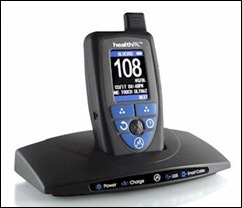




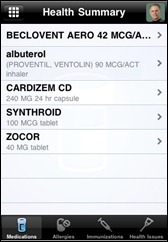
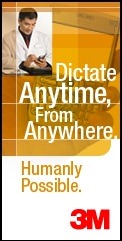
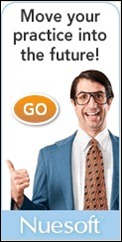
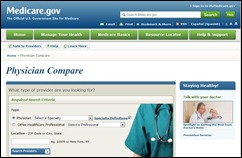

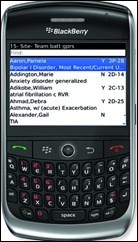


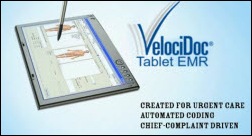





The article about Pediatric Associates in CA has a nugget with a potentially outsized impact: the implication that VFC vaccines…